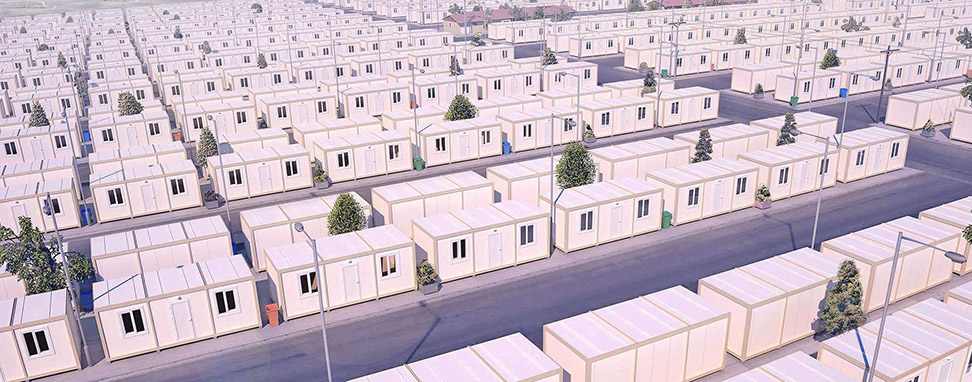A typical site camp will consist of multiple buildings, with a variety of facilities to accommodate the workers residing there. These will include ablution facilities, kitchen and dining areas, lounge rooms and offices. In addition, it’s worth considering the waste storage requirements and associated specialised disposal requirements such as chemical toilets, hazardous waste, general rubbish etc.
Choosing the location of your site camp is a key decision to make, as it can dramatically affect the overall outcome and success of your project. There are a number of factors playing a part in this, including environmental factors such as proximity to sensitive or environmentally sensitive areas, social factors such as proximity to residential areas and schools, and accessibility i.e. will the proposed site have safe and convenient access for employees travelling to and from work?

One major factor in the design of a site camp is the estimated maximum number of people who will be based there. This will determine the footprint size required, and how many ablution, change and shower facilities are required, and will also help you to identify any other facility needs such as a cafeteria or mess hall.
Man camps are typically used in the mining, oil & gas and construction industries for remote workforce accommodation. They keep workers on the jobsite and reduce the need for commutes to local towns. However, they can be restrictive to a worker’s lifestyle as they have strict rules regarding everything from alcohol consumption to family visits. Fortunately, hotels are an excellent alternative to man camps, and they can offer better quality living quarters for your remote construction crew.
In the case of a large scale nuclear plant construction, engineers were forced to decide where to locate construction and support camps. The Hanford site was considered first priority, and a new town was built there to house the work force. Initially, the camp consisted of ten four-wing barracks for men and two four-wing barracks for women, plus a mess hall and commissary building. Thousands of additional family-sized pyramidal tents and existing town buildings were also provided for the work force.
Often construction sites are located in harsh environments (northern regions, permafrost), which places high demands on technical elements of the camp buildings. For example, thicker insulation is needed to counter the extreme weather conditions, and cabin frames must be made larger to cope with snowfall. These factors can all add up to a more expensive construction camp than if it had been designed and built in an urban environment, and this should be taken into consideration when budgeting for your site camp. Ideally, the site camp should be constructed close to the object of work, which will save on transportation costs. This will also reduce traffic movement and disruption on the construction site.








